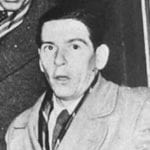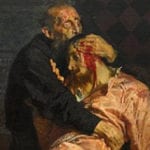 Travel
Travel  Travel
Travel  Creepy
Creepy 10 Haunted Places in Alabama
 History
History Top 10 Tragic Facts about England’s 9 Days Queen
 Food
Food 10 Weird Foods Inspired by Your Favorite Movies
 Religion
Religion 10 Mind-Blowing Claims and Messages Hidden in the Bible Code
 Facts
Facts 10 Things You Never Knew about the History of Gambling
 Weird Stuff
Weird Stuff 10 Cool and Creepy Facts about Collecting Tears
 Humans
Humans The Ten Most Lethal Gunslingers of the Old West
 Misconceptions
Misconceptions 10 Phony Myths and Urban Legends That Just Won’t Die
 History
History 10 Amazing Roman Epitaphs
 Travel
Travel Top 10 Religious Architectural Marvels
 Creepy
Creepy 10 Haunted Places in Alabama
 History
History Top 10 Tragic Facts about England’s 9 Days Queen
Who's Behind Listverse?

Jamie Frater
Head Editor
Jamie founded Listverse due to an insatiable desire to share fascinating, obscure, and bizarre facts. He has been a guest speaker on numerous national radio and television stations and is a five time published author.
More About Us Food
Food 10 Weird Foods Inspired by Your Favorite Movies
 Religion
Religion 10 Mind-Blowing Claims and Messages Hidden in the Bible Code
 Facts
Facts 10 Things You Never Knew about the History of Gambling
 Weird Stuff
Weird Stuff 10 Cool and Creepy Facts about Collecting Tears
 Humans
Humans The Ten Most Lethal Gunslingers of the Old West
 Misconceptions
Misconceptions 10 Phony Myths and Urban Legends That Just Won’t Die
 History
History 10 Amazing Roman Epitaphs
10 Innocent People Who Were Tragically Executed
Even though science has come a long way, and analysts have become more adept at scrutinizing evidence, there is still a wide margin for error when determining whom to charge with a crime. Many people are falsely charged, and sadly, some die before their innocence is proven. Here are 10 examples of the unfortunate few who were executed before evidence exonerated them of the crimes for which they were accused.
10 Roy Michael Roberts

While Roy Michael “Hog” Roberts was by no means a perfect man, it was unlikely that either of the charges that led to his execution were true. He simply had back luck and bad timing. When he was a younger man, Roberts was the prime suspect in a restaurant robbery, which he was imprisoned for. Later, the actual perpetrator confessed to having worked alone. While serving his last months in prison, Roberts was accused of holding down a prison guard named Tom Jackson during a prison riot, while two other inmates stabbed the guard to death.
Despite a lack of the guard’s blood on his clothes—the same evidence which incriminated the two actual murderers—Roberts was charged and sentenced to death. He maintained his innocence, and offered to take a polygraph test—which he passed—to prove his innocence. His exoneration was refused by the governor, and he was executed the following day, his last words being, “You’re killing an innocent man and you can all kiss my ass.”
9 Josefa “Chipita” Rodriguez

Josefa “Chipita” Rodriguez moved from Mexico to Texas with her father when she was a young girl. Even when she was young, she was known for taking in travelers and providing them with a warm meal and a place to sleep. Years after her father’s death, she maintained this reputation. That is, until one of her guests was found dead with an axe in his head. Rodriguez was immediately blamed. Six hundred dollars worth of gold was found down the river from his body, giving the court enough evidence to believe that she had committed the crime to obtain his gold.
Despite her old age and frail body, she was found guilty and hanged, becoming the first and only woman to be legally hanged in Texas in that time period. Her hired man—and suspected illegitimate son—was later put under scrutiny and assumed guilty of the murder, which led many to believe that Rodriguez let herself be convicted to protect her son.
8 We-Chank-Wash-Ta-Don-Pee “Chaska”
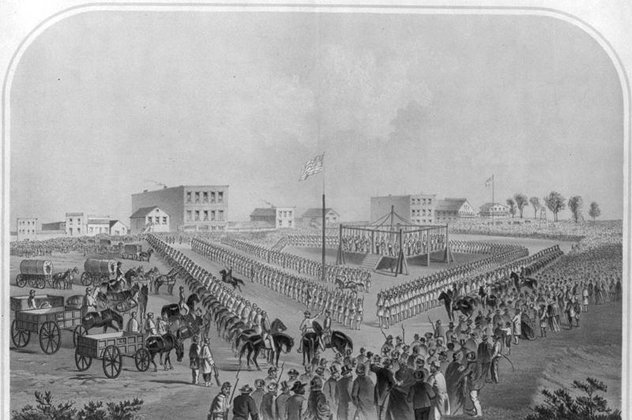
As 19th-century America began sliding closer toward civil war, a harsh winter and crop shortages led to the deterioration of the previously amicable relationship between white Americans and the Dakota people of present-day Minnesota. The US government refused to send resources to the tribe, and the Dakotas retaliated by raiding farms and villages, sparking the Dakota War of 1862. Among those captured by American soldiers on charges of being supporters of the Dakota leader, Little Crow, was a young man named Chaska.
The violation of a peace treaty ignited the tribe’s long-standing resentment at the loss of their lands to the settlers, and a group of Dakota went on a killing spree, murdering an estimated 470 men and women. Chaska’s conviction was a tragic case of mistaken identity. He was accidentally filed under the name of another prisoner, a man named Chaskey-etay, who had brutally murdered a pregnant woman. Chaska’s involvement in the raid was limited to holding a small family captive, then protecting them from the violence of his brothers. He corresponded with President Lincoln, who gave him a written pardon. That pardon never arrived. On December 26th, he was hanged. This regrettable case of wrongful execution has come back into the spotlight recently, with many petitioning for Chaska’s federal pardon.
7 Troy Davis
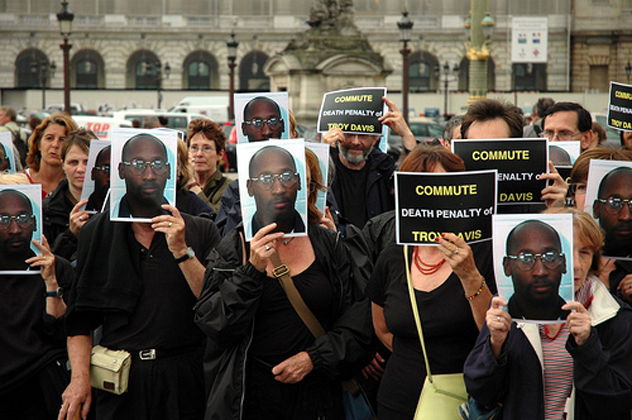
On August 19, 1989, shots were fired in a Burger King parking lot in Savannah, Georgia. Police officer Mark McPhail was fatally shot when he intervened in the assault on a homeless man. The accused gunman was 20-year-old Troy Davis. Nine people in total claimed either to have witnessed the shooting or to have been a confidant of Davis. Despite missing crucial evidence, including the murder weapon, Davis was indicted and charged with the murder of McPhail.
Even though seven of the nine witnesses later retracted their claims that Troy was the shooter, he was put to death by lethal injection at 10:53 PM on September 21, 2011—over 20 years after the crime was committed. He was pronounced dead at 11:08, after which thousands of mourners gathered. Various organizations, churches, and supporters protested his execution up to the moment he died, successfully delaying his execution date twice, but falling short on the third. Troy Davis’s execution is still the subject of many debates on whether or not the death penalty should remain legal.
6 Claude Jones

In 1989, an armed man walked into a Texas liquor store and fatally shot the 44-year-old store owner. At the scene was found a hair which was believed to be that of the perpetrator. Since DNA testing wasn’t an option, investigators studied the hair against the hairs of 15 people seen entering and leaving the store on the day of the shooting. The most similar hair belonged to one Claude Jones, a local resident. He was indicted in 1990 and sentenced to death. Nearing the end of his stay on death row, Jones made a request for then-governor George Bush to allow the hairs to be DNA tested, since DNA testing had become widespread over the years since his conviction.
Bush claims to have never received the request, and Jones was put to death soon after, maintaining his innocence to the last. Later DNA testing has raised doubts about his guilt, and while it wouldn’t have exonerated him, it would have thrown out his conviction and allowed him to return to trial.
5 Joe Hill
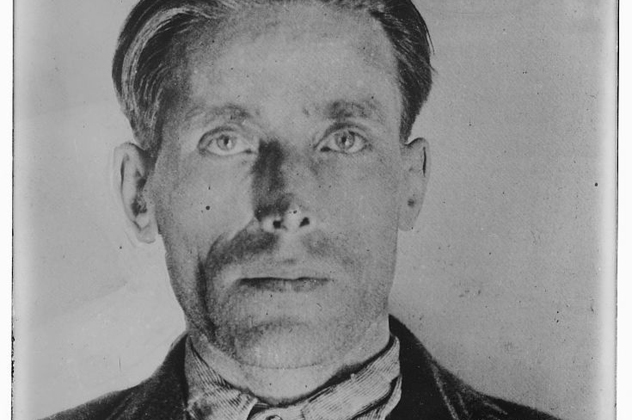
Joe Hill, a labor icon of the early 20th century, was convicted of murdering a grocer in 1914. The conviction was based on the evidence of a gunshot wound in Hill’s chest, which the grocer’s son claimed he inflicted after finding Hill with his father’s dead body. Unable to explain his own wound past “a rival’s doing,” Hill was found guilty. He was later executed by firing squad, but much skepticism surrounded his guilt.
It wasn’t until later, when author William M. Adler was doing research for his novel, The Grand Budapest Hotel, that the truth was uncovered. While searching through old documents left behind by the author of an earlier, unpublished novel, Adler found a letter from Hilda Erickson, Hill’s sweetheart. In the letter, Erickson explained that her former fiance, Otto Appelquist, had shot Hill following a round of teasing. Erickson never testified in Hill’s case, but this information countered the claim of the murder victim’s son, leading many to believe that Hill was innocent of the crime.
4 The Perry Family

Often referred to as “The Campden Wonder,” the events in the English town of Campden between 1660 and 1662 certainly are a wonder. In 1660, an elderly man by the name of William Harrison set out on foot to handle some business matters. When he failed to return by dusk, his wife sent his manservant—one John Perry—to find him. By dawn, neither of the men had returned, so yet another man was sent to search—Harrison’s son. On his journey, the young Mr. Harrison stumbled upon Perry, who claimed to have never spotted the older Mr. Harrison. On their journey home to Campden, they found the unkempt clothing of William Harrison, and—assuming he was dead—immediately began searching for a body.
When they returned to town empty-handed, the community went into an uproar. Everyone abandoned their work to search for the body of William Harrison, which proved to be a futile effort. Finally, under interrogation, John Perry admitted to having been an accessory to murder, with his mother and brother doing the killing while he kept track of where his master would be. His story was that they had robbed and murdered him for rent money, and John, Joan, and Richard Perry were found guilty of the supposed crime and sentenced to hanging. Two years later, after the Perrys had been put to death, William Harrison walked back into town with a wild story of being captured by horsemen, held hostage, and sent to Turkey. Many question why Perry would falsely confess and send himself and his family to their doom, but the answers to those questions died with him.
3 Timothy Evans

On December 2, 1949, Beryl and Geraldine Evans were found strangled in a locked washhouse behind their home in Notting Hill. The first to be questioned was Timothy Evans, Beryl’s husband and Geraldine’s father. Upon learning about the death of his wife and daughter, he began to revert to a childlike state, according to the testimony of his half sister, Mary Westlake. Evans insisted that it was not he who committed the murders, but John Christie, a neighbor. Nobody believed him due to his assumed madness.
Under pressure from the interrogation, Evans falsely admitted to the murder of his wife, but refused to mention the 13-month-old baby. He was found guilty of both murders, and sentenced to death by hanging. A wild twist in the case occurred nearly five years later, when John Christie was arrested and charged with the murder of at least eight women, including the wife and daughter of Timothy Evans. Two murders had been committed before the Evans family even moved to the area in 1947. John Christie was hanged in 1953, and Evans was given an official royal pardon.
2 Joe Arridy

In 1936, 15-year-old Dorothy Drain was raped and then murdered with a hatchet in her hometown of Pueblo, Colorado. The true murderer of Drain, Frank Aguilar, led police to one Joe Arridy to avoid his own arrest (a ploy which ultimately failed; Aguilar was executed for the same murder two years before Arridy). Joe Arridy was a mentally handicapped young man who moved into a local rail yard after escaping an abusive institution. Following Aguilar’s claims, he was arrested and convicted of the murder. Arridy was sent to death row, where he spent the remainder of his days happy and playful. Even the prison’s notoriously cruel guard took a liking to Arridy, bringing him toys to play with while he awaited his execution.
On the day of his execution, Arridy showed understanding of what was to happen to him when the priest was sent in to give him last rites, and is quoted as saying, “They are killing me.” Soon after, he was escorted to the gas chamber to be executed. Arridy was pardoned decades after his execution.
1 Derek Bentley

On November 2, 1952, on the rooftop of a warehouse in Croydon, England, Police Constable Sidney Miles was fatally shot during an attempted robbery. The would-be robbers were 19-year-old Derek Bentley and 16-year-old Christopher Craig. Craig was armed, and when two officers, including Miles, intervened in their attempted robbery, he began to taunt the police. Upon orders to hand over his weapon, Bentley shouted an ambiguous order: “Let him have it!” Craig opened fire, hitting Miles in the head and killing him instantly. When brought to court, Craig testified that Bentley ordered him to shoot, therefore making him the instigator of a murder.
Both men were tried and convicted for the murder, but because of his age, Craig was protected under the law and was sentenced to 10 years imprisonment. Bentley, however, was sent to the gallows. Less than three months after the crime, Bentley was hanged, much to the chagrin of the community. It wasn’t until 1993, about 40 years later, that Bentley was officially pardoned.
Sidney Alene is a college student, aspiring lawyer, and general lover of words. She also spends far too much time on Listverse to reasonably maintain her responsibilities in life.


